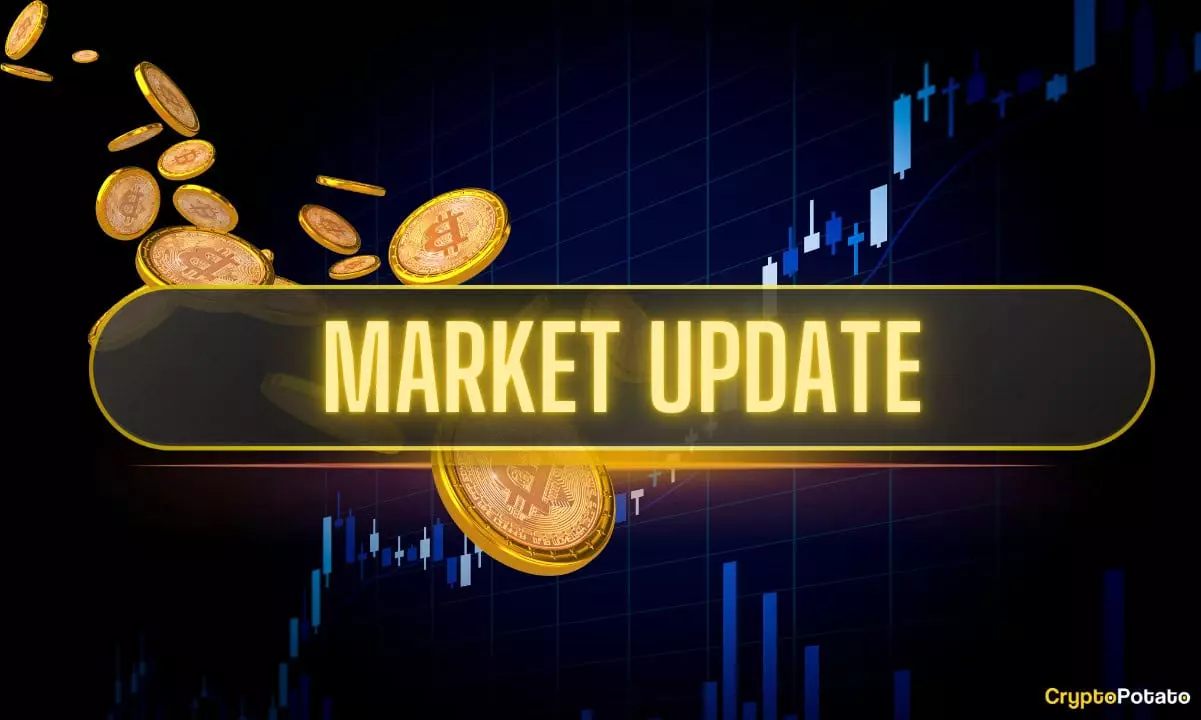In the midst of turbulent geopolitical events, particularly escalating tensions surrounding trade between the United States and China, it is crucial to examine the effects on market stability and investor confidence. Although the previous week was marked by dramatic shifts, the current week’s trade scenario sheds light on noteworthy developments within the cryptocurrency sphere, particularly concerning Bitcoin. The cryptocurrency, often viewed as a barometer of market sentiment, displayed both resilience and volatility, revealing the complex dynamics at play.
Bitcoin recently made headlines as its price oscillated dramatically, declining below the $75,000 threshold before rebounding to about $82,000. This rollercoaster ride serves as a reminder of Bitcoin’s sensitivity to macroeconomic factors. Coupled with a temporary halt on tariffs, excluding those imposed on China, Bitcoin managed to break through critical resistance levels, peaking at around $86,000. This fluctuation underscores the cryptocurrency’s ongoing struggle to navigate a choppy market environment, which, while often chaotic, presents rich opportunities for knowledgeable traders.
Investor Behavior and Market Dominance
What’s particularly striking during this period is the behavior of large-scale investors or ‘whales’ within the Bitcoin ecosystem. Recent analyses indicate that these major players, holding between 1,000 and 10,000 Bitcoins, are positioning themselves strategically by accumulating assets aggressively amid inconsistent price movements. This proactive stance suggests a rising belief in the long-term value of Bitcoin, contrasting sharply with the cautious sentiment observed among smaller investors. The contrast is striking—while larger entities are buying in, smaller investors seem hesitant, caught in a cycle of uncertainty fueled by external economic pressures.
Bitcoin’s market dominance, now surpassing an impressive 60%, is also worth noting. While altcoins like Bitcoin Cash and Solana have had their moments of glory, Bitcoin’s reign at the top, especially amidst a climate laden with economic turbulence, speaks volumes about its status as a store of value. This phenomenon is particularly relevant, as the market currently hosts an unprecedented volume of cryptocurrencies, making Bitcoin’s dominance all the more significant. In essence, Bitcoin is evolving into a cornerstone of investor strategy, and its continued strength sets a compelling precedent for the future of cryptocurrencies.
Policy Challenges and Strategic Developments
On an institutional level, discussions surrounding Bitcoin’s future are intensifying. The Biden administration is reportedly deliberating the establishment of a national Bitcoin reserve, funded through non-traditional government revenue streams like tariffs. This proposition highlights a crucial intersection between digital assets and fiscal policy, ushering in a new era where Bitcoin could play a central role in national finance. However, it also raises pressing questions about the implications of government involvement in crypto markets—will this foster a stable environment or create further uncertainty?
At the same time, influential figures such as Federal Reserve Chair Jerome Powell have voiced caution regarding interest rate policies, warning of the dangers inherent in ongoing tariff disputes. Powell’s remarks indicate a broader hesitance from policymakers, which can be detrimental to market dynamics. The tension created by these economic policies adds layers of complexity, potentially challenging the gains made by Bitcoin and other cryptocurrencies.
Bitcoin’s Future: A Wait-and-See Approach
As Bitcoin seeks to establish a foothold amid uncertain economic landscapes, the market seems to be entering a consolidation phase. With a realized capitalization around $872 billion, Bitcoin’s growth trajectory also appears muted, as investors exhibit caution characterized by a notable absence of aggressive buy-ins from smaller players. The proliferation of Bitcoin ETFs and corporate buyers may serve as stabilizing forces, yet overall market sentiment remains tepid, suggesting we are in a wait-and-see phase.
In sum, the intersecting realms of finance and politics create a chaotic backdrop for Bitcoin, one that demands vigilant observation. While the cryptocurrency market shows promising signs of resilience, the reality of external pressures and global trade tensions cannot be overlooked. As Bitcoin navigates through these tempestuous waters, its evolution remains heavily influenced by investor sentiment, institutional efforts, and policymaking. Herein lies the irony—amid political strife and economic fluctuations, Bitcoin continues to capture both the imagination and the wallets of investors around the world, serving as a beacon of hope for those willing to ride the waves of uncertainty.
















Leave a Reply